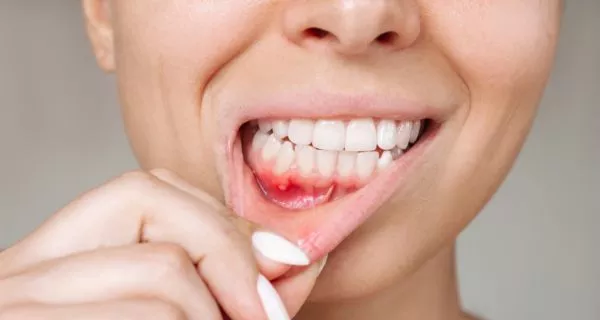Last Updated on: 12th December 2025, 09:56 am
AIDS severely weakens the immune system, making oral infections more common and harder to control. Patients may develop fungal problems, viral lesions, ulcers, dry mouth, and even aggressive gum disease. With regular checkups from a local dentist in Ventura County, early detection and safe treatment improve comfort, prevent complications, and support better overall health.
Every year on December 1st, World AIDS Day, we take a moment to reflect on the importance of prevention, support, and health care for people living with HIV and AIDS.
Many people don’t realize it, but the mouth can be one of the first places where symptoms of advanced HIV infection (AIDS) manifest.
For our team at Channel Islands Family Dental , serving communities across Ventura County, including Ventura, Oxnard, and Santa Paula, we see firsthand how critical oral health care is for our patients managing HIV / AIDS.
What is AIDS and how does it hurt my body’s defenses?
AIDS (Acquired Immunodeficiency Syndrome) is the advanced stage of HIV infection. At this stage, your immune system is very weak and can’t fight infections the way it normally would.
- The Target: HIV specifically attacks T4 lymphocytes –the immune cells your body needs to defend itself.
- The Result: When these cells are low, even minor infections that a healthy person would easily fight off can become serious, persistent, or aggressive.
- The Meaning: AIDS is a combination of signs and symptoms that shows your body’s defense (immune system) has a reduced ability to fight infections.
This problem with your body’s defenses also affects your oral health in many ways. In fact, an interesting fact is that your mouth can show the first signs of immune weakness.
What oral manifestations are associated with AIDS?
Your dentist is often the first person to notice problems. Because many oral signs of HIV/AIDS appear before systemic symptoms become severe, having a compassionate, local dental professional in Ventura County can be a life-saver.
A dentist in Oxnard, a dentist in Newbury Park, or any of our affiliated Cidentist locations across the county are trained to identify these common oral conditions in patients with weakened immunity:
Dry mouth (xerostomia)
HIV/AIDS can reduce saliva production, making your mouth dry. Dry mouth can make eating, speaking, and swallowing difficult. It also increases the risk of tooth decay and oral discomfort.
Thrush (oral candidiasis)
Thrush is a fungal infection that appears as:
- white or yellow patches on your tongue, cheeks, or roof of your mouth
- redness, burning, sore throat, or cracked mouth corners
Oral hairy leukoplakia
This viral condition shows as:
- white, wavy patches on the sides of the tongue.
- It is more common in people with weakened immunity.
Mouth sores and ulcers
- Canker sores (aphthous ulcers): small, round sores inside the cheek, under the tongue, or in the throat. Spicy, hot, or acidic foods can make them worse.
- Chronic ulcers: caused by viral infections, autoimmune issues, or early oral cancers.
Early detection is important because mouth sores can indicate a decline in immune health, especially when they don’t heal quickly.
Herpes Simplex Virus (HSV) outbreaks
Cold sores or fever blisters can be more severe and persistent in people with HIV/AIDS. Antiviral medication is usually required to manage outbreaks.
Gum disease (fingivitis and periodontitis)
HIV/AIDS can make bacterial gum infections progress quickly.
- You may see red, swollen, or bleeding gums.
- If untreated, these infections can lead to bone loss.
Proper oral hygiene and regular dental visits are essential to prevent severe problems.
Kaposi’s sarcoma
This neoplastic lesion may appear as flat or raised dark-red or purple spots in the mouth. It is usually painless in the early stages but requires monitoring by a dentist or doctor.
Dental problems related to HIV/AIDS can cause pain, difficulty chewing, and swallowing problems. This can make it harder to take medications or eat enough nutrients, affecting overall health and the effectiveness of HIV treatment.
Regular dental visits in Ventura County can help detect problems early, manage symptoms, and support your immune system.
How do dentists prevent infections when treating HIV/AIDS patients?
At Channel Islands Family Dental in Ventura County, your safety is our top priority. We follow strict infection-control protocols recommended by the CDC to make every dental visit safe, for patients and staff alike.
Are there risks of HIV transmission in dental settings?
Thanks to modern dental standards, the risk of HIV transmission is extremely low. While HIV can theoretically be transmitted:
- from patient to professional
- from professional to patient
- between patients
The truth is that transmission does not happen when clinics follow strict prevention protocols and all dental equipment is properly sterilized. In our clinics located in Ventura county, you can feel confident and safe, whether you are a patient living with HIV/AIDS, a health professional, or a healthy patient.
What safety measures does Channel Islands Family Dental follow in Ventura County?
Transmission requires three conditions: a susceptible host, a strong pathogen, and a route of entry.
Because a patient’s infection status is not always known, all patients are treated with the same strict safety measures, including:
Protective barriers
- gloves for all procedures
- proper handwashing before and after glove use
Sharps safety
- safe recapping techniques
- careful handling of scalpels, needles, wires, and scissors
Instrument sterilization
- autoclave sterilization for all reusable instruments
- dry heat sterilization when appropriate
- routine maintenance and calibration of all equipment
You can visit us at any of our Ventura County locations, in Oxnard, Santa Paula, Port Hueneme, and Newbury Park, to see how we carefully maintain every space, follow every protocol, and protect every person.
From the moment you enter our offices, every surface, tool, and procedure meets strict safety standards. You can trust that your dental care is clean, careful, and safe for everyone.
Why is early dental care essential for HIV/AIDS patients?
Living with HIV or AIDS can be challenging, and sometimes it’s easy to forget that your mouth can tell you a lot about your health. Early and regular dental care is very important because your dentist will notice signs of immune changes before you even feel sick.
How do regular dental visits help?
During your routine dental checkups, your local dentist is there to support you every step of the way. Regular visits can help you:
- identify early oral signs of HIV progression before bigger problems appear
- prevent opportunistic infections that can make you feel sick
- improve comfort, eating, and nutrition so you can enjoy meals without pain
- support your overall immune health
Your dentist can also guide you personally by:
- recommending medications, gels, or mouth rinses if needed
- showing you the best way to brush and floss your teeth
- suggesting the right tools for your daily care
- helping you manage the challenges of living with HIV/AIDS with care and understanding
Regular dental visits are not just about teeth, they are about feeling better, staying strong, and having someone you can trust guide you through the process.
How can Ventura County patients with AIDS protect their oral health?
Most oral problems related to HIV/AIDS are treatable, and prevention makes a big difference. Here’s what you can do:
- See your dentist regularly for check-ups
- Brush and floss your teeth twice a day for two minutes
- Take your HIV medication on time.
- Tell your doctor if your medicine makes your mouth dry and ask about ways to help
- If you don’t have a regular dentist, ask your primary care provider or local clinic for a referral.
If you live in Ventura county, at Channel Islands Dental Family Office we understand what you are living your needs are also ours. We are here for help by providing safe, caring, and expert support every day.
Contact Cidentist: Your local Ventura County dental team
If you’re looking for compassionate, confidential dental care in Ventura County, our team at Channel Islands Dental Family Office is here to help.
You can schedule an appointment with a friendly local dentist at any of our locations along Ventura County, in Oxnard, Santa Paula, Port Hueneme or Newbury Park.
We are committed to providing safe, comprehensive, and respectful dental care for everyone in the community.
Frequently Asked Questions (FAQ)
Don’t wait. Schedule an appointment at a local dentist in Ventura County. Early evaluation can help manage symptoms, prevent infections, and check for signs of immune changes.
Patients with HIV/AIDS should typically schedule dental visits every 3–6 months. Frequent checkups allow dentists to monitor oral health, prevent infections, and provide tailored advice for daily care.
Voice Search Snippets (Q&A)
References
1. Canadian Centre for Occupational Health and Safety. (2025, August 28). HIV/AIDS precautions: dental. Government of Canada. https://www.ccohs.ca/oshanswers/diseases/aids/dental.html
2. Giorgi, A. (2025, September 6). Pictures of HIV mouth sores. Verywell Health. https://www.verywellhealth.com/hiv-mouth-sores-pictures-8622643
3. Lomelí, M. S. M., González, H. L. A., De Jesús Ruiz, A. A., Lomelí, M. M. A., Martínez, S. S. Y., González, A. E. M., Andrade, V. J. F., & Varela, H. J. J. (2022). Oral Manifestations Associated with HIV/AIDS Patients. Medicina, 58(9), 1214. https://doi.org/10.3390/medicina58091214
4. MouthHealthy. (n.d.). HIV, AIDS and oral health. Oral Health Information From the ADA. https://www.mouthhealthy.org/all-topics-a-z/hiv-aids-and-oral-health
5. Sharkey, L. (2023, January 18). Can you contract HIV through oral sex? Healthline. https://www.healthline.com/health/oral-sex-hiv



















